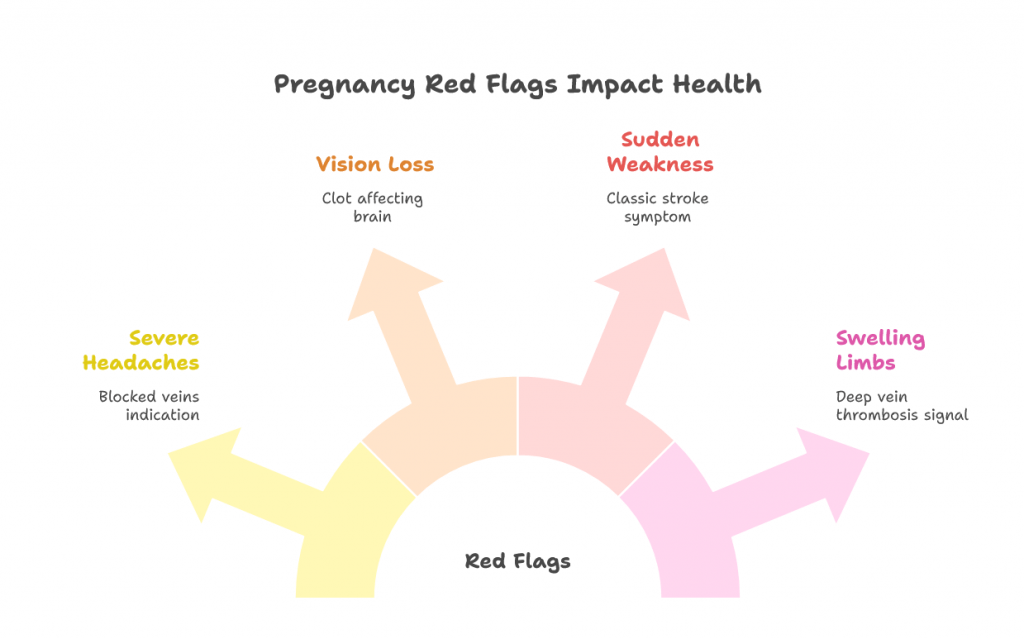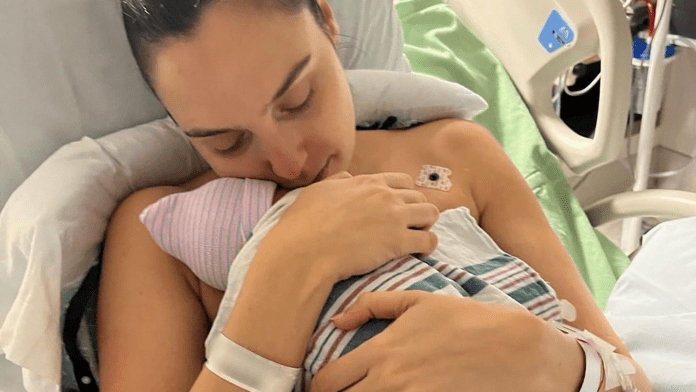While eight months pregnant, Gal Gadot survived three dangerous brain clots after weeks of misdiagnosed headaches. Thanks to a life-saving MRI and emergency surgery, she and her baby are alive and healthy today. Her story highlights the critical warning signs of brain blood clots in pregnancy—from severe headaches to vision loss—and offers vital lessons on prevention, early detection, and the importance of advocating for your health.
Gal Gadot’s Ordeal: From Headaches to a Life-Threatening Emergenc
In early 2024, Gal Gadot endured severe headaches that persisted for nearly three weeks. Doctors initially attributed them to migraines or pregnancy hormones, a common but sometimes misleading assumption. As her condition worsened—she reported episodes of hearing and vision loss—her mother urged her to undergo further testing.
An MRI revealed three blood clots in her brain (cerebral venous thrombosis), a condition that can trigger a stroke or even prove fatal. Gadot was rushed into emergency surgery and safely delivered her daughter Ori, whose name means “my light.” (People, NBC)

What Is a Brain Blood Clot in Pregnancy?
A brain clot, or cerebral venous thrombosis (CVT), occurs when blood clots block veins that drain blood from the brain. During pregnancy, hormonal and blood changes increase the risk of clotting.
- Incidence: Around 3–4 cases per 100,000 pregnancies occur, with higher risk in women over 30.
- Causes: Hormonal shifts, dehydration, high blood pressure, cesarean sections, and genetic clotting disorders.
- Dangers: If untreated, CVT can cause seizures, strokes, and in rare cases, maternal death.
This condition is rare—but early detection makes treatment highly successful. (Healthshots)

Key Warning Signs to Watch For
Gadot’s case shows how symptoms can be overlooked. If you or someone you know is pregnant, these are red flags not to ignore:
| Warning Sign | Why It Matters | Action to Take |
|---|---|---|
| Severe headaches lasting days/weeks | May indicate blocked veins, not just pregnancy migraines | Request an MRI or CT scan if pain persists |
| Vision or hearing loss | Suggests clot is affecting brain function | Seek emergency medical help immediately |
| Sudden weakness or confusion | Classic stroke-like symptom | Call emergency services without delay |
| Swelling in legs or face | Can signal deep vein thrombosis, which may travel to brain | Ask about blood clot screening |
These signs are especially urgent in the third trimester, when clotting risks peak.
How to Reduce the Risk of Blood Clots During Pregnancy
While not every clot can be prevented, lifestyle and awareness play a big role:
- Stay hydrated: Dehydration thickens blood, raising clot risk.
- Move regularly: Light exercise or even walking helps circulation.
- Know your family history: If blood clots run in your family, discuss preventive blood-thinners with your doctor.
- Monitor blood pressure: High blood pressure is a risk factor for clotting and stroke.
- Insist on tests if needed: As Gadot’s story shows, persistence can save lives.
Gal Gadot’s Message: Advocate for Yourself
After her recovery, Gadot emphasized that her survival hinged on pushing for further testing: “If you feel something is wrong, check it. Listen to your body.”
By going public, she hopes to raise awareness so other women—and their families—recognize the symptoms earlier. Her daughter’s name, Ori (“my light”), stands as a reminder of how awareness and timely action can save two lives at once. (InStyle, Los40)
Conclusion
Gal Gadot’s survival is not just a Hollywood story—it’s a maternal health warning. Severe headaches, vision loss, or neurological changes during pregnancy are never “just hormones.” With proper medical attention, cerebral clots are treatable and preventable. Her story should encourage expectant mothers everywhere to trust their instincts, ask for advanced testing, and put their health first.

